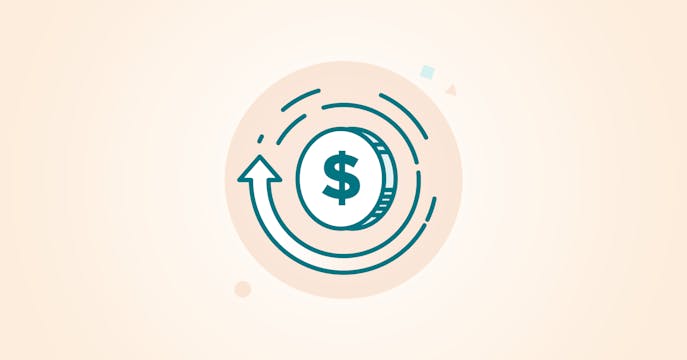Pre-Payment Penalties and Privileges
Will it cost you to pay down your mortgage faster or make a change?
A better mortgage product gives you more flexibility. Here are some options and costs that can come with your mortgage to help you save money and stress.
Change is the spice of life. Does your mortgage agree?
Every mortgage product can come with different terms. But, life happens (an unapologetically-true cliché). You may find your situation suddenly changes, and that's when you look to your mortgage fine print to see what you can actually do.
For example, you may want to:
- Change your payment frequency
- Increase your payment periodically (or skip one)
- Put down a lump sum on your principal
- Recast your mortgage after pre-paying a lump sum for instantly lower payments
- Make a bigger change to your mortgage, such as a different rate type, a refinance or a lender-switch
- Pay off your mortgage entirely (early!)
It's good to have options, which is why we advocate for your better mortgage. But, lenders also want to protect their source of income, which is (of course) your mortgage loan and the interest you pay. It makes sense that some changes will come with a cost.
Let's look at the pre-payment options or penalties that may come with your terms.
What type of mortgage product do you have?
Lenders will offer various mortgage products, often tied to rates, that have different levels of payment flexibility:
OPEN-TERM MORTGAGE means you have almost limitless flexibility in changing your payments, paying out your mortgage or making a switch, but it typically comes with a higher variable rate.
CLOSED-TERM MORTGAGE means you're locked into your rate and term for a specified time (5 years is most common). It offers lower rates than an open one but more restrictions and penalties. Most Canadian homeowners choose this type of mortgage.
- A variable-rate mortgage offers less pre-payment penalties, but carries more risk if rates go higher.
- A fixed-rate mortgage carries more penalties, but lower risk, as your rate is locked in.
- With a closed mortgage (variable or fixed), many lender products allow a certain percentage of increased payments or lump sums every year of your term.
What pre-payment privileges should you have?
- Increase your monthly payments. Often, there will be an allowable increase on your monthly mortgage payment from 5% up to 100% (the latter means you can double up on a monthly payment). Or, lenders will allow a double-up payment only a few times per year.
- Lump sum pre-payment. Every year of your term, lenders may permit you to make a larger payment on your mortgage, usually a percentage of your principal amount (can be from 5 to 20%; varies by lender).
- Payment schedule flexibility. You may be able to switch from a monthly payment schedule to a bi-weekly or accelerated bi-weekly schedule, which will speed up the amount you put down on your principal ahead of interest charges. Not all lenders charge you for this change (some do, or don't allow it at all).
- Mortgage recast. This handy feature lets you get lower payments right away after pre-paying enough down on your principal, instead of having to wait for renewal. Our in-house lender, THINK Financial, offers this option for free.
Check with your lender for your pre-payment options. Or, we can check for you, at no cost or obligation. That way, we can also provide you with payment modelling for different scenarios, so that you can see how the numbers line up with your mortgage goals.
What pre-payment penalties would you have to pay?
If, before the end of your current term, you want to break to get out of your mortgage, pay a larger amount down, or pay it off entirely, you may be charged costly penalties, along with admin fees (such as legal, appraisal, title, tax and discharge fees).
A better mortgage product doesn't try to charge you more than a standard penalty, for example, by using the prime rate to calculate your penalties versus your actual rate )for a closed, variable-rate mortgage).
- An early payoff penalty may apply if you decide to pay off the entire mortgage all at once, especially before the end of your term. It's usually charged as a percentage of the overall unpaid principal balance.
- 3 months of interest is typically charged for exiting a variable-rate mortgage.
- Interest Rate Differential (IRD) comes into play for fixed-rate mortgages. Lenders will charge whichever is greater, 3-months interest or the IRD. The IRD is calculated as the difference between your original mortgage interest rate and the current interest rate, applied to the amount of your remaining term of mortgage (lenders may calculate the IRD differently; some may be a lot higher than others).
If you have very restrictive terms, any change can cost you a lot more than usual, such as a change in payment frequency, wanting to put more down on your mortgage, or if you want to sell your home.
Open-term mortgages have the most flexibility with no penalties for payout, though some admin fees may apply.
Beware the extra costs of an 'ultra-low' rate product.
The mortgages attached to a bargain-bin rate can cost you more if you think you'll need changes later. They can trap you with a bona-fide sale clause (a very restrictive condition that can hinder the sale of your home), make you pay even higher penalties for changes, or have hidden fees you didn't expect to see.
Here's an example of how to calculate your IRD penalty (or talk to us for the numbers magic):
- Step 1: Review your most recent mortgage statement. Note the interest rate, the time left on your mortgage, and your remaining balance. For example, if you've put in 2 years of payments on a 5-year mortgage, you'll still have 3 years (36 payments) left on your mortgage.
- Step 2: Take your current rate and add 1.5%. This is roughly the posted rate at the time your mortgage was issued. Then find today's posted rate on a similar mortgage that is currently offered by your lender. Make sure to use the posted rate that most closely matches your remaining term (3 years, for our example). If the current posted rate is higher than your mortgage rate including the 1.5%, no need to go further — the 3-month interest penalty will apply. If the posted rate is lower, continue to Step 3.
- Step 3: Take your current rate (with 1.5% added) and subtract your current bank's posted rate. This number will provide the interest rate differential (IRD).
- Step 4: Multiply the IRD by the number of years left on the term of your mortgage term (for our example, 3 years). Then multiply that number by your remaining principal amount on your mortgage. The result will be your IRD penalty.
Please note that lenders don't calculate their IRDs the same way. Contact your lender directly to determine your exact IRD penalty, or we can help — an expert by your side can put your penalty into perspective.
A lot can happen over a mortgage term.
Talk to us to get your most-flexible options to suit your needs.
At True North Mortgage, our friendly, expert brokers will quickly help you figure out the fine print, and even suggest a better mortgage fit through a refinance or a switch at renewal time, if you need it.
Buying your first home? We'll get you a flexible mortgage right off the start, at your best rate (for which you qualify) to save a pile of cash.
Give us a shout for your better mortgage service!
What do you need? We're at your service.
Better mortgages, for all your needs

First-Time Home Buyers
Get the best start and save a pile of cash with our mortgage experts.

Watch Out For Mortgage Traps
Is your spidey-sense tingling? Watch out! That bargain-bin rate may cost you more later.

Renewals and Transfers
Don't sign without talking to us! Show us your renewal notice — we’ll beat it.

How to Get Out of a Mortgage
I need to get out of my mortgage. What are my options, and the costs?

Refinancing Options
Refinancing may save you cash, or offer up needed funds. We'll help sort it out.

Can you recast your mortgage?
Cast ahead after pre-paying your principal — and reel in lower payments for a budget break.

How much will it cost to break your mortgage?
Find out how what penalty you might pay and when it makes sense to break.

Mortgage Payment Calculator
See what your monthly payment could be, with our quick and accurate calculator.

Mortgage Renewal Reminder
Renewal time already? That was fast. Get a reminder to save a pile of cash.
